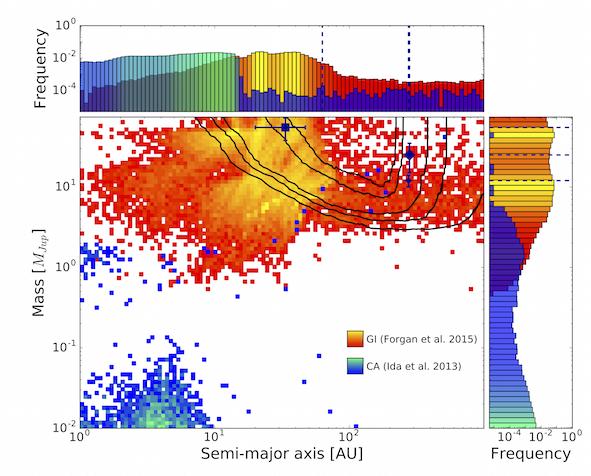The formation of planets on wide orbits
Comparing observed exoplanet populations with synthetic populations so as to determine the likely formation mechanism of the known exoplanets.
In a recent paper (Vigan et al. 2017) researchers at the Centre for Exoplanet Science compared the sample of directly imaged exoplanets with synthetic populations generated using two different possible planet formation scenarios.

There are two main planet formation scenarios. In one, known as core accretion, small dust grains grow to ultimately form kilometre-sized planetesimals. These planetesimals then coagulate to form planetary-mass bodies that, if they form early enough and are sufficiently massive, can then accrete a gaseous envelope to become a gas giant planet. The alternative is that gas giant planets can form via direct gravitational collapse, if the protostellar disc is sufficiently massive and also quite cold.
When we compare the known exoplanets on wide orbits to synthetic planet populations generated via the two different possible formation scenarios, we find that these wide orbit exoplanets are more likely to have formed via direct gravitational collapse than through core accretion. This is mainly because directly-imaged, wide orbit planets tend to be quite massive (bigger than Jupiter). Core accretion, however, tends to form lower mass planets on closer orbits, while gravitational instability, on the other hand, tends to form more massive planets on wide orbits and, hence, compares better with the sample of directly imaged exoplanets.
However, the observations also indicate that gas giant planets on wide orbits are rare. Consequently, even though our results suggest that wide orbit, directly imaged planets are more likely to have formed via direct gravitational collapse, than via core accretion, it also suggests that planet formation via direct gravitational collapse is probably rare, potentially occuring in only a few percent of systems.

